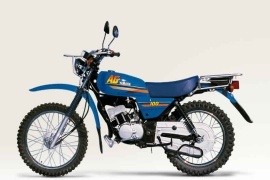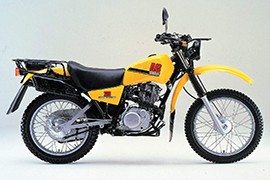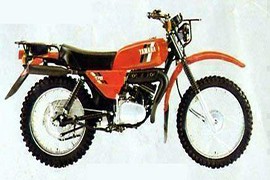YAMAHA AG Models/Series Timeline, Specifications & Photos
First production year: 1982
The Yamaha AG100 was a motorcycle released in 1973 for humanitarian, agriculture, aid, and other rural professional uses. The bike was only offered in select regions, such as Latin America, Australia, New Zealand, and Africa.
The bike was equipped with several features designed for hard rural use, including an enclosed O-ring chain drive, a kick start, a kickstand on both sides, an auto lube system, and it was a very easy-to-maintain motorcycle.
Starting in 2015, the NGO Riders for Health kept over 1,400 motorcycles in seven African countries, especially AG100 models, due to their durability, easy maintenance, and small size suited to female health workers.
In 2003, the Japanese motorcycle manufacturer launched the Yamaha AG100, a simple yet popular motorcycle known for its rural capabilities. Over the years, the bike was improved to be more helpful for men who live on rugged farms in New Zealand and Australia.
In the visual department, the bike was pretty simple, packing standard features, such as a small round headlight up front, a high-mounted front fender, a one-piece dual seat, a medium luggage rack, two side stands on right and left, and lightweight wire-spoke wheels with off-road tires.
As for performance, the 2003 Yamaha AG100 had installed a 97cc two-stroke air-cooled single-cylinder engine underneath its fuel tank, delivering 9 hp at 6,000 rpm and 9 Nm (7 Lb-ft) torque at 6,000 rpm.
The Yamaha AG200, like the AG100 model, was a motorcycle made for agriculture, military, humanitarian, and other professional rural uses. It was available only in select markets, including Australia, Africa, Latin America, and New Zealand.
The Yamaha AG200 came with several unusual utility and survivability components, such as two side stands on each side, front and rear cargo racks, an encased chain drive, sealed drum brakes, engine, handlebar, and chain crash bars, a clutch lock, and N-1-2-3-4-5 gear arrangement.
Visually, the AG200 was similar to the AG100 model, packing standard features, such as a round headlight, a high-mounted front fender, a single seat, and lightweight wire-spoke wheels with off-road tires.
The bike was built around a semi-double-cradle aluminum frame with a telescopic fork on the front and a Mono-Cross shock absorber on the rear, providing optimum handling capabilities.
The braking power was handled by a drum braking unit on the front and rear wheels, delivering optimum stopping performance.
In the performance department, the 1985 Yamaha AG200 had installed a 196cc two-stroke single-cylinder air-cooled engine underneath its fuel tank, delivering 16 hp with maximum strength at 7,000 rpm.
The power produced by the engine was transferred to a five-speed manual transmission with a wet multi-plate clutch and sent to the rear wheels through a final chain drive.
The Yamaha ZG175 was a farm motorcycle manufactured by Yamaha in the 1970s and continued production until the 1990s. The bike was based on the Yamaha CT3 and received minor modifications during production. It was placed between the AG100 and AG200 models.
The AG175 was powered by a 175cc single-cylinder engine with an auto lube system and was equipped with suitable features for agriculture use, such as a front and rear rack, an enclosed chain drive, and several other fittings.
In the visual department, the bike had installed standard features, such as a round headlight, a high-mounted front plastic fender, a single seat, a high-mounted single exhaust system, and wire-spoke wheels with off-road tires.
In the suspension department, the bike packed a telescopic fork on the front and dual-side-mounted shock absorbers on the rear, delivering optimum suspension performance and handling.
As for the braking power, the motorcycle's wire-spoke wheels were fitted with a drum braking unit on both front and rear wheels, offering the stopping force needed.
The 1982 Yamaha AG175 had installed a 171cc two-stroke single-cylinder air-cooled engine fed by a Mikuni carburetor, delivering 14 hp with maximum strength at 6,500 rpm.
The bike's engine was bolted to a five-speed manual transmission with a wet multi-plate clutch, sending the power to the rear wheel through a final chain drive.


